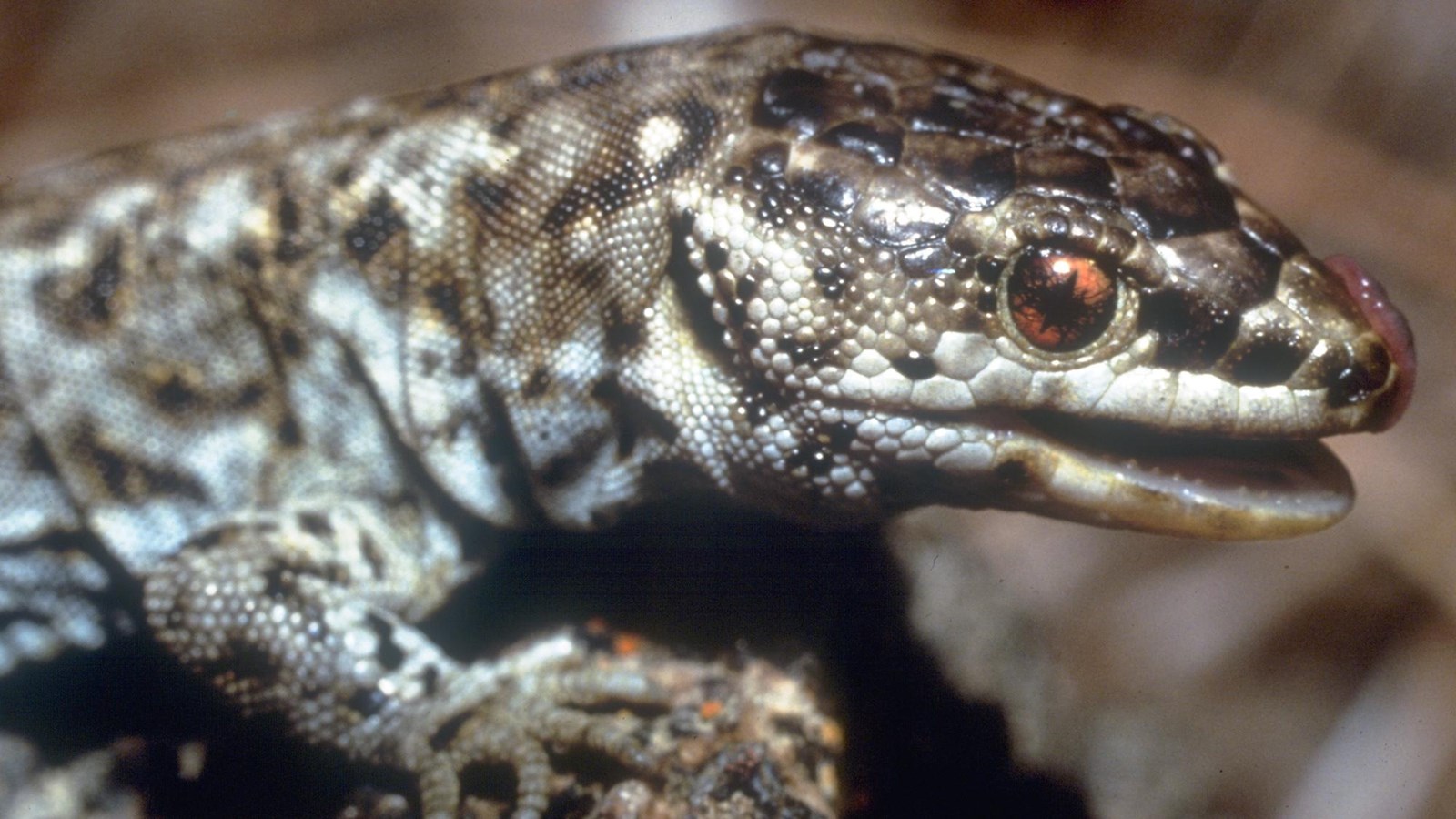Last updated: May 21, 2021
Place
Island Night Lizard

Charles Drost
Scientific Name
Xantusia riversiana
Introduction
The island night lizard is a very unique, medium-sized endemic reptile found only on the Channel Islands off the coast of southern California, where it occurs on Santa Barbara, San Nicolas and San Clemente Islands. Island night lizards are the most morphologically distinct of the endemic vertebrates on the Channel Islands, indicating they have been isolated from the mainland for a long time.
Quick and Cool Facts
- In the park, the island night lizard is found only on Santa Barbara Island.
- Studies on Santa Barbara Island has shown that the island night lizards are not nocturnal as suggested by their name, but instead are most active at midday, with little activity in the cool early morning or late afternoon, and none at all at night.
- The island night lizard gives birth to live young (as opposed to laying eggs), which is not common among reptiles.
- Island night lizards are slow growing and long-lived, with some individuals reaching at least 25 years of age.
- During the course of their long lives, they accumulate a lot of injuries including regenerated tails, scale, and miscellaneous cuts, missing toes, eye injuries, infections and the presence of cactus spines.
- All larger lizards have some injuries, while only about 1/3 of the smaller lizards do.
- With their unusually low metabolic rate, the lizards do not have high energy demands and can live on about half the food that other similar-sized lizards require. Therefore, they have very small, overlapping home ranges.
Appearance
The island night lizard is a medium-sized lizard, with adults ranging from 2 ¾ to 4 inches in body length. It is endemic to the Channel Islands off the coast of southern California where it occurs on Santa Barbara, San Nicolas and San Clemente Islands. Both the color and pattern of the back of adult island night lizards are highly variable. Though these patterns grade into one another, there are serveral distinct types of which the mottled pattern is the most common (44% of the lizards). Less frequent patterns include plain, blotched, striped, broken stripes, ocellated, and finely mottled. Lichen-covered rocks and ground which make up their habitat and appear to provide good camouflage. Such cryptic coloration is oftern associated with the sort of sedentary lifestyle that the lizards have. However, the variety of colors and patterns present among the lizards is unusual. Few other terrestrial vertebrates show the marked color and pattern differences seen in island night lizards. In those that do, it is generally seen as geographic variation over a comparatively large range.
Range
Island night lizards are an endemic Channel Islands reptile, known only to occur on Santa Barbara Island in the park and on San Nicolas and San Clemente Islands. They are the most morphologically distinct of the endemic vertebrates on the Channel Islands, indicating they have been isolated from the mainland for a long time.
Habitat
The island night lizard is veru very secretive, preferring habitats with dense vegetation cover, such as boxthorn and prickly pear cactus, as well as cracks and crevices in and around rock outcrops and surface boulders. These areas provide protection from predators. They are also often found under rocks, driftwood, and fallen branches. Suitable habitat on Santa Barbara is in all of the canyons and on some of the sea cliffs, especially on the south side of Signal Peak. Island night lizards are very sedentary and have very small home ranges, averaging about 183 square feet.
Feeding
Island night lizards feed on a wide variety of terrestrial spiders and insects, but they also eat an unusually large amount of plant material for a small lizard. Common animal food items include ground-dwelling spiders, pillbugs, a ground beetle (Amara sp.), moth larvae, and ants. Common plant food items include fruits of Australian saltbush, flowers, fruits and leaves of boxthorn, fruits of iceplant, and composite (Asteraceae) flower parts.
Reproduction
Night lizards have a low reproductive rate compared with other lizards, likely because they are so long-lived. Only about half of the adult females bear young in a given year and a female may not have her first brood until she is nearly five years old. Seasonal activity peaks in the spring when mating takes place, then continues at a lower level through the summer and fall. Island night lizards breed in April, and 2 - 9 young are born fully developed in September. Giving birth to live young (as opposed to laying eggs) is not common among reptiles. Young of the year are active throughout the year, while adults are active primarily during the spring and summer.
Conservation Status
The island night lizard is listed as Threatened by the U.S. Fish and Wildlife Service, due to habitat alteration and predation resulting from introduction of alien species (e.g., feral cats, goats, pigs, and rabbits). However, according to the Channel Islands Species Recovery Plan of 1984, habitat on the islands "probably has not been altered to the detriment of the [island night] lizards by grazing mammals". Goats and pigs have recently been removed from San Clemente Island. Today, the island night lizard is not thought to be in imminent danger of extinction, and could be a candidate for delisting. Santa Barbara Island is part of the Channel Islands National Park. The entire island of San Clemente, used for military training, has been designated as Critical Habitat.
Additional Information
